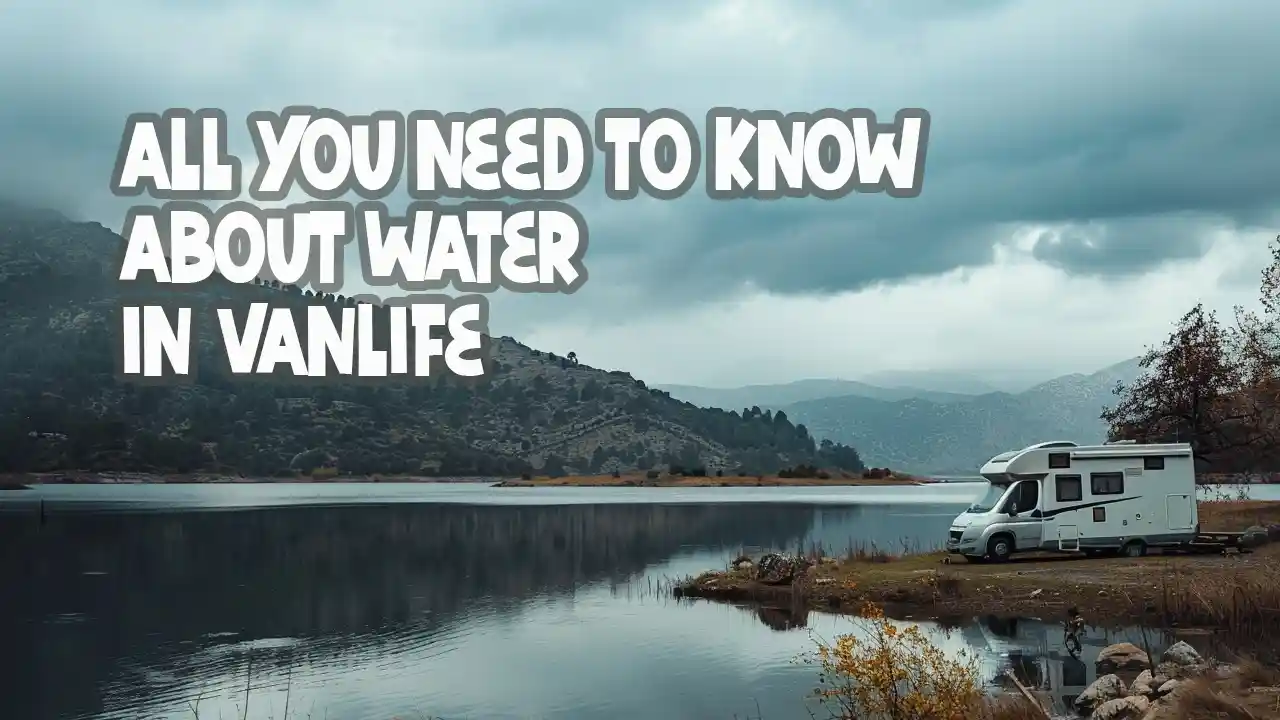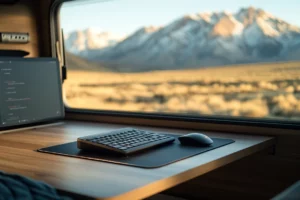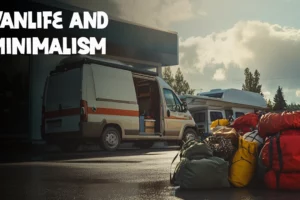
Water in Your Camper Van, Van, or RV for Vanlife
Why Is Water So Crucial in a Camper Van?
Living in a camper van means embracing freedom, endless horizons, and daily discoveries. But this beautiful adventure comes with a major challenge: water management. Why? Because water is life, especially when your home is rolling through mountains and valleys.
In this small world on four wheels, every drop of water counts. Whether it’s for drinking, cooking, showering, or washing dishes, water is at the heart of all our daily activities. Managing it becomes a delicate art, balancing conservation and supply.
This article will explore the many aspects of water in a camper van: how it flows, how to ensure its potability, where and how to refill it, and most importantly, how to use it responsibly. You’ll discover tips for saving water, advice on making it potable, and even how to prepare for extreme conditions.
In short, whether you’re a seasoned vanlifer or considering becoming one, understanding the importance of water in your mobile home is essential. Ready to dive into the world of water management in a camper van? Follow the guide.
How Does Water Work in a Camper Van?
Curious about how this precious liquid flows through your home on wheels? First, know that you don’t have just one type of water in your camper van, but three.
The Types of Water and Their Paths
Firstly, potable water is stored under the vehicle, or often inside a bench seat to prevent freezing (which could be a big problem). An electric 12V pump immersed in this tank pushes the water to your faucets through flexible, food-grade hoses of two different colors: blue for cold water and red for hot water. Ingeniously and logically, the water pipes are placed next to the heating ducts to minimize freezing. Simple and clever, right?
As for hot water, a small water heater, usually gas-powered (though electric models are becoming more common), stores around 10-15 liters (2.6-4 gallons) to ensure a warm shower in winter. Depending on your needs, it heats the water directly (it usually takes about 20 minutes) or stores more for those well-deserved showers.
Finally, at the end of this system is the faucet, which is… electric. It includes a switch that activates the pump when you turn it on. Very cleverly, the shower faucet often has a switch on the showerhead itself to allow for significant water savings, but we’ll discuss that later.
Grey water comes from your shower and dishwashing. It flows through a drain and ends up in a separate tank, usually located under the camper van, which is logical due to gravity, as water flows downward, avoiding the need for an additional pump to send it to this tank.
Black water comes from your chemical toilets, which have a cassette for those without composting toilets! (A little tip: don’t delay emptying it, unless you enjoy questionable aromas!)
Where to Fill Up Water for Your Camper Van?

In France, for example, you have plenty of options to find water to fill up your camper van:
- Service stations
- Camper van areas
- Public fountains
- Even some cemeteries can be water points.
If you’re struggling to find a place to refill, there are lists of Vanlife apps that offer maps with points of interest. If you are going abroad, especially outside Europe, you will need to be much more careful when refilling. Lastly, it’s always better to refill on sunny days rather than during heavy rains, especially if it has rained a lot (filling up for 10 minutes in the rain isn’t great, and from a water quality standpoint, you don’t know if the rainwater has caused any issues in the system).
Rules and Respect for Nature
Let’s talk about emptying waste water. The goal is to do it properly. Dumping your waste water anywhere isn’t just risky, it can really pollute. Service areas are designed for this. For black water, don’t take chances: find proper disposal sites to avoid pollution, often located in the same service areas.
- Never dump waste water in nature. It’s harmful to the ecosystem.
- Choose eco-friendly products for your grey water. It helps.
- Why not install a filter system to reuse this water for cleaning?
We have written an article on emptying grey and black water in a camper van, where we provide information on where, how, and when to empty waste, as well as the risks of improper disposal. Feel free to check it out!
Can You Drink Water from Your Camper Van’s Tanks?
What Affects Potability?
Imagine this: you’re parked, surrounded by greenery, and the big question arises, “Is the water here safe to drink?” Water quality can vary, affected by heat, its original quality, or how often you refill it. The real concern is the invisible little critters that can multiply in it. We’re often unaware because most of us have always had access to potable water, making us very sensitive if the water we consume is even slightly contaminated. Stagnant water in your tanks typically shouldn’t be drunk without some intervention, but there are ways to make it potable.
Treating Water in Your Tank
Here are a few methods to make your water drinkable:
- Filtering: Using charcoal or ceramic filters can remove impurities and some germs.
- UV Treatment: Devices like the Tank O3 use UV light to kill viruses and bacteria (but remember, this requires 12V power).
- Chemical Treatment: Adding chlorine or iodine tablets, which can be purchased at pharmacies, directly into the tank. This is very useful in countries where water is less treated.
And if you prefer simple methods, there’s the basic trick: boiling water for one minute, an old-fashioned but effective way to kill microbes. So for your coffee or tea, yes, you can use the water from your tank.
Managing Water While on the Road
When living in a camper van, every drop of water is precious, especially if nature throws a challenge our way. This highlights the importance of managing our reserves effectively.
How to Save Water Efficiently
Saving water is essential. Start by reviewing your habits: opt for quick showers or even a quick freshen-up at the sink. Mixer taps are key to using less water without sacrificing comfort; ours has a button on the showerhead to save significant amounts of water. For washing dishes, use a basin filled with water instead of letting the tap run endlessly. Start with the cleanest items (glasses, cutlery) and finish with the dirtiest (plates and finally pots).
Adapting to Extreme Conditions
With temperatures fluctuating wildly, adjustments are necessary. In extreme heat, water evaporates faster. Keep your tanks cool and in the shade if possible. Against the cold, the risk is freezing. Investing in heated tanks or insulated bottles can prevent the unpleasant surprise of a frozen tank.
Essentials to Never Run Dry
Before heading out, make sure you have a water survival kit. Whether it’s purification tablets, a portable filter, or even pre-filled bottles, it’s better to be prepared for any situation. And if you ever need to draw from a natural source, ensure its potability first. (Better safe than sorry!)



